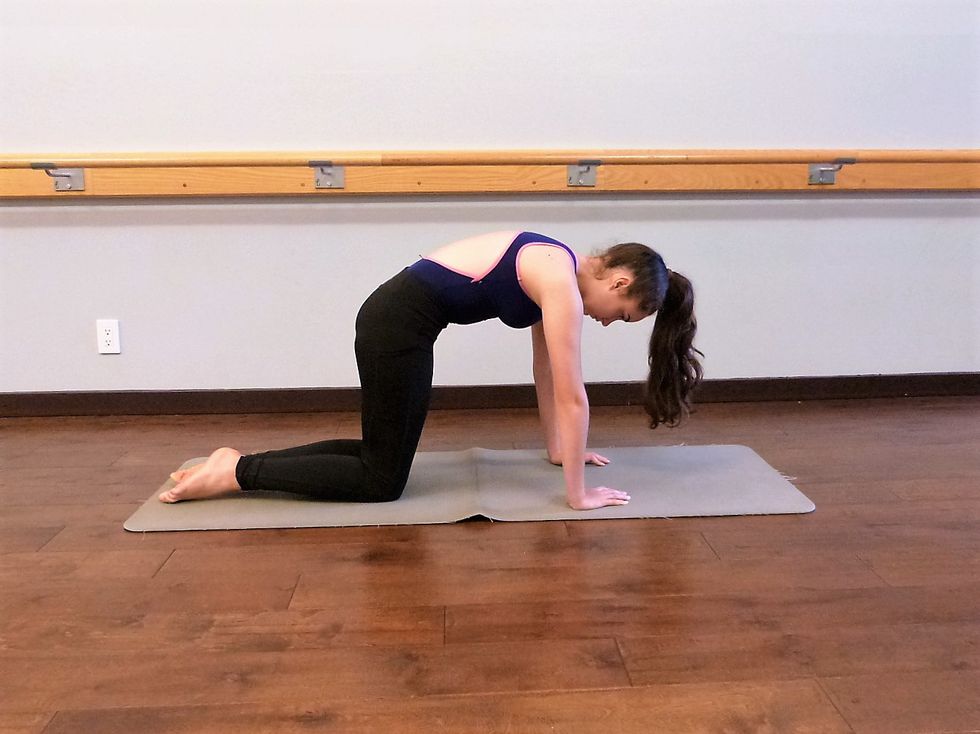Could A Tight Back Be Limiting Your Flexibility?
Dancers looking to increase their flexibility rarely think about their upper backs. But this common place of tension could limit your neural mobility.
“The mobility of your back, especially your upper back, is very important when thinking about the mobility of the nervous system, fascial system and flexibility in general,” says leading dance physiotherapist Lisa Howell in her Front Splits Fast Program. “If your upper back is very tight, then the nerves and fascia that lie along the spine can get restricted.”
It may seem strange to mobilize your upper back in order to improve your splits or extension. Yet this may be the missing link that you’ve been looking for.
Try incorporating these exercises into your cross-training to improve your range of motion.
MOBILIZE
A healthy torso should be able to move forward, backward and side-to-side, and rotate without pain or the feeling that your muscles are being pulled.
Flexion & Extension
1) Starting on your hands and knees, articulate from tail to head into full spinal flexion, or “cat” position.

2) Take a few breaths through the back and sides of your ribs. Breath is a great way to break up any tissue that might be restricting your range.
3) Unwind the spine into spinal extension, or “cow” position. Being careful to support your spine with your abdominals. If you tend to be hypermobile in your lumbar spine (low back) focus on the thoracic spine (mid back) extension by reaching your heart forward and feel a gentle opening of the ribcage.

Return to starting and repeat four to five times
Lateral Flexion
1) Sitting in a comfortable position, rest your hand on a fitness circle, stability ball, or the floor on your right side.
2) Press down on your prop, or the floor, and bend to the right.

3) Gently breathe into the left side of the ribcage. Inhale and exhale three times, using the image of creating space between each rib on every inhale.
Return to starting position, do it on the left side and repeat the series three times
Rotation
1) Start on your knees with one hand on the floor and the back of your other hand on a stability ball or the floor.
2) Rotate your ribcage by rolling the ball or sliding your hand to the opposite side of your body. Breathe out as you rotate to let go of any tension you might be holding.

Return to starting position and repeat four to five times, then do the same on the opposite side.
PRACTICE
Training proper ribcage placement can prevent back tightness in the future.
Quadraped Thera-band
1) Place a light Thera-band around the bottom of your ribcage and hold it with some tension in quadruped position.

2) Let your ribcage relax and let the Thera-band open up the ribcage.

3) Press into the Thera-band using your abdominals. The Thera-band will give you great feedback as to where your ribs should be.
Return to starting position and repeat five times
STRENGTHEN
Strengthening the ab muscles will help keep your ribcage in place. But, if you have a tight back, you may not have enough range of motion to perform a full crunch. Give your back some support by performing ab preps/crunches on a mini stability ball until strength and mobility is gained.
Ab Prep
1) Start in a neutral spine resting your upper back on the ball. Both feet can be on the floor or one leg can be in tabletop.
2) Gently flex the thoracic spine, taking weight off of the stability ball but maintaining contact.

Repeat eight to 10 times.




